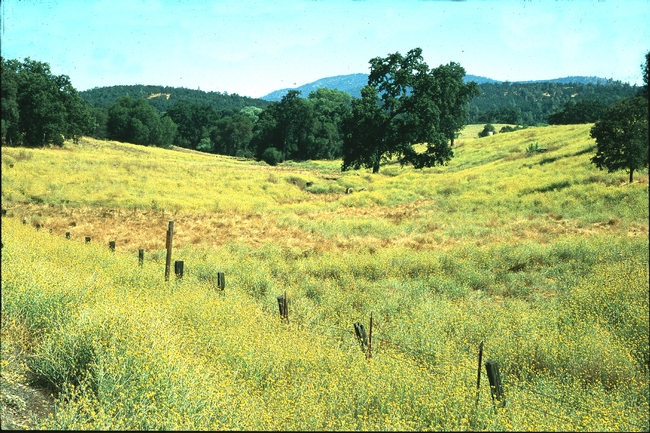In 1997-1998, the big El Nino year in California, yellow starthistle (Centaurea solstitialis) (YST) infestations throughout the state were probably the largest that I have seen in my time in California. Not only were the infestations the densest, but the size of the plants often exceeded six feet tall. The reason for this is that water uptake by the roots of YST in the Sacramento Valley and surrounding foothills is highest between March and June in both shallow and deep soils. In contrast, water uptake by annual grasses is highest earlier in the season and only in shallow soils. During the El Nino year of 1997-1998, there was plenty of available soil water long after grasses had completed their life cycle and the extensive rainfall throughout the season recharged the deep soil moisture. Such dense infestations and large plant size translates into more vegetation, more flowers, and most importantly, more seed production compared to normal rainfall or drought years. As a result, if a management program is to be implemented, these are they type of years where control is most important and cost effective. The 2016-2017 rainy season is shaping up to be a similar situation as the 1997-1998 season. Deep soil moisture recharge and late season rainfall will contribute to large plant size and high density of YST this summer, and ultimately higher seed production that will lead to future infestations. Thus, I would recommend to land managers and ranchers that a YST management program be prioritized this year using either early season strategies (herbicides or high intensity grazing) or late season strategies (prescribed burning or mowing). The goal of this management program should be to prevent seed production that can cause problems in future years.
Extent of the YST infestations in the summer after the 1997-1998 El Nino year. Photo taken in Calaveras County.
